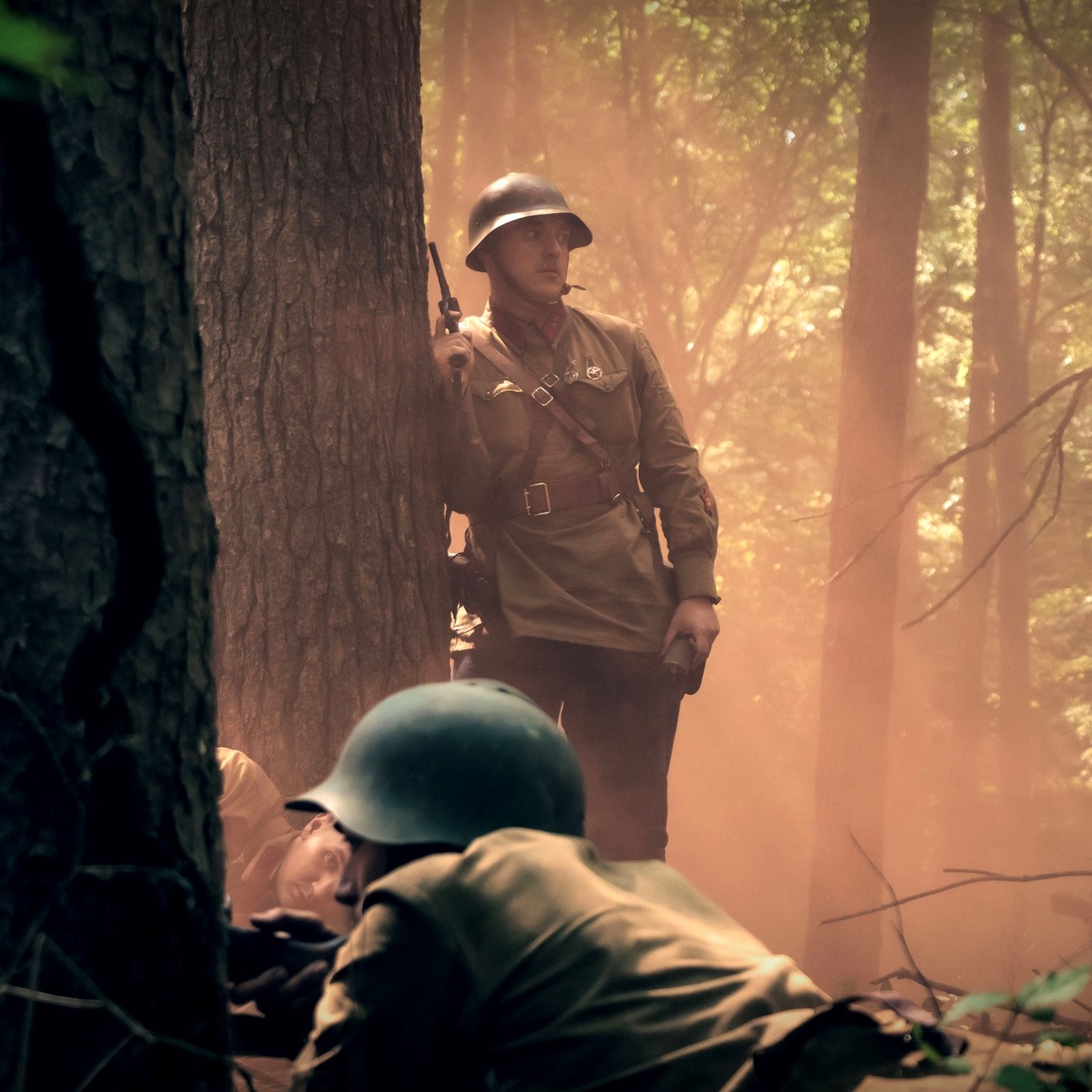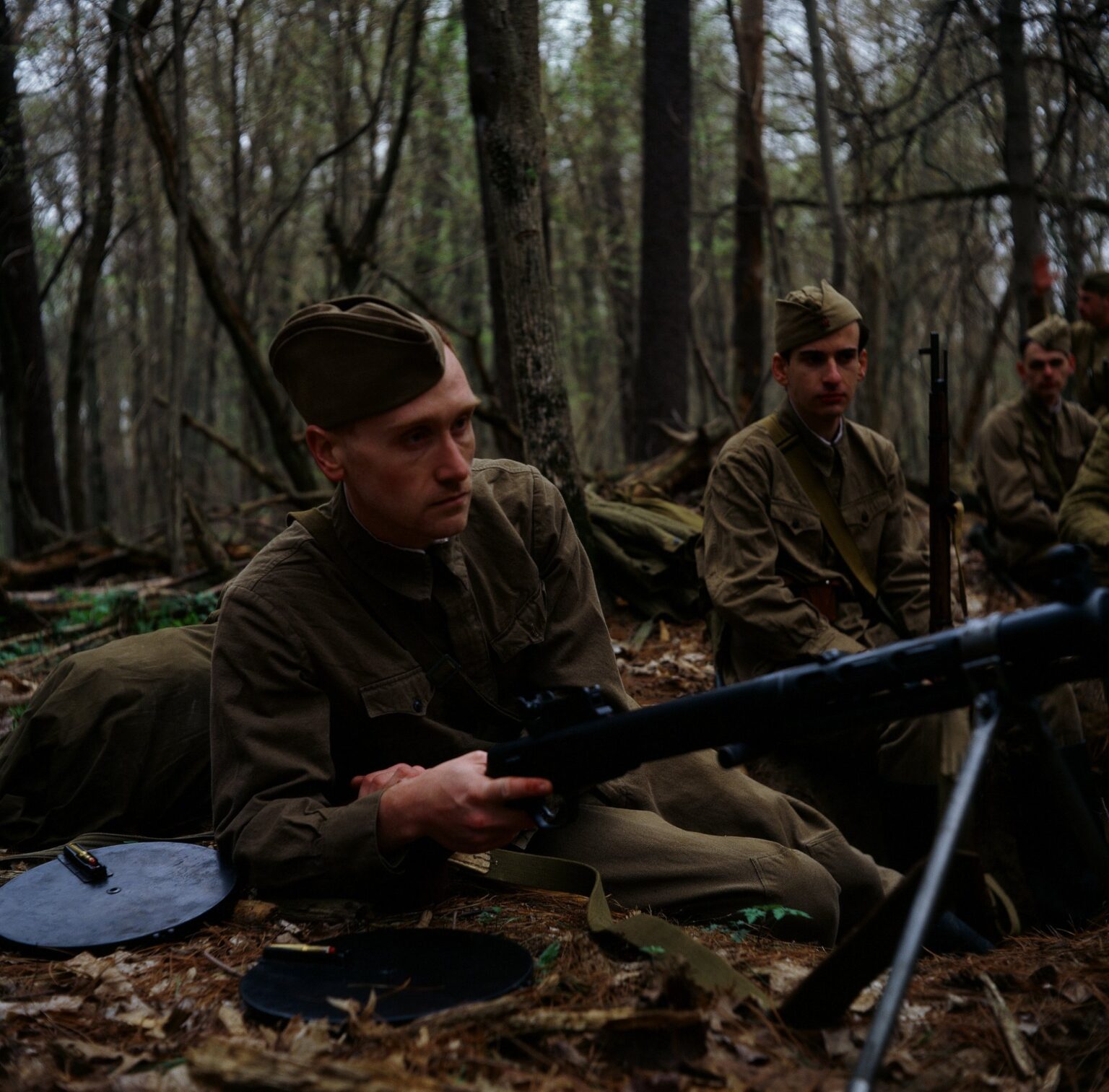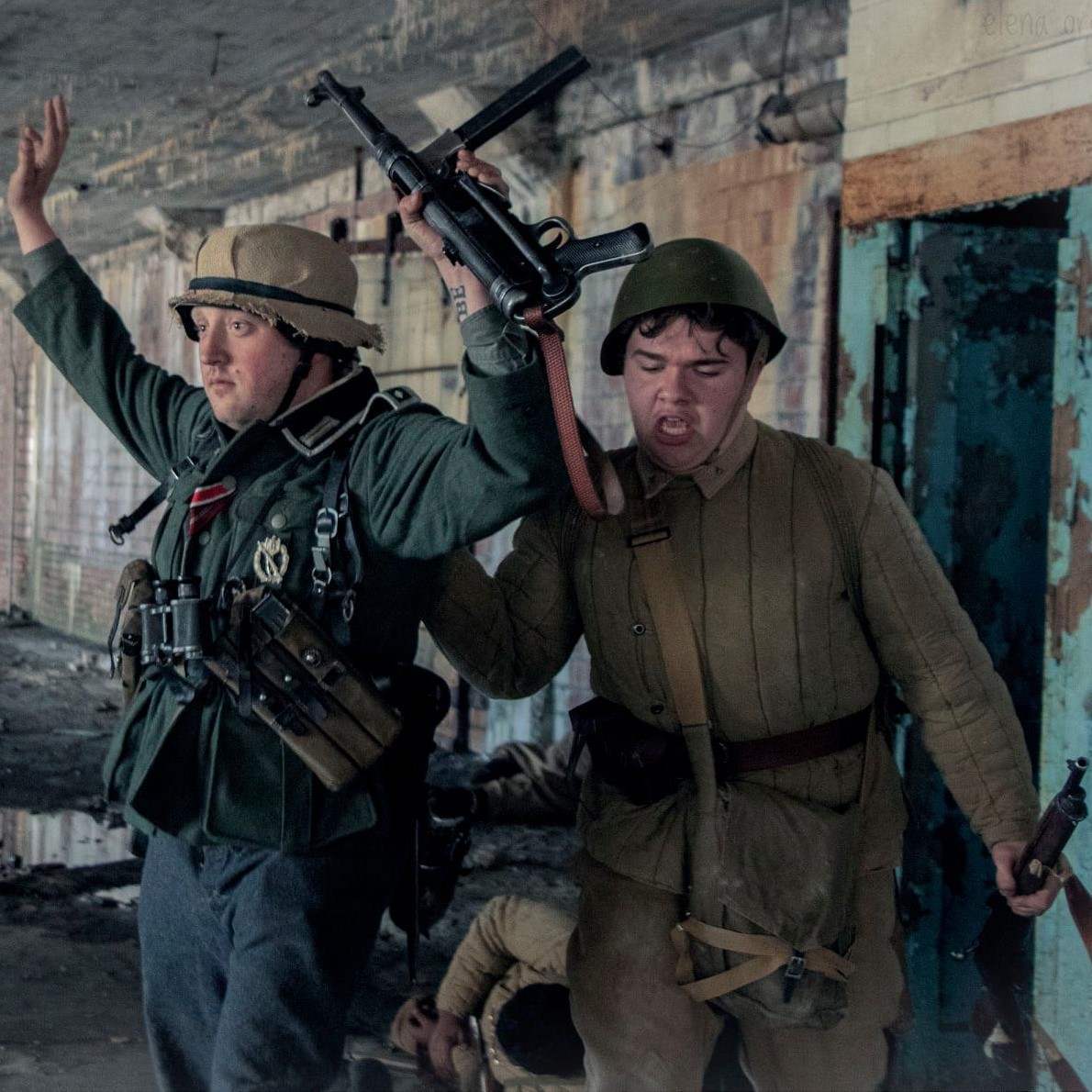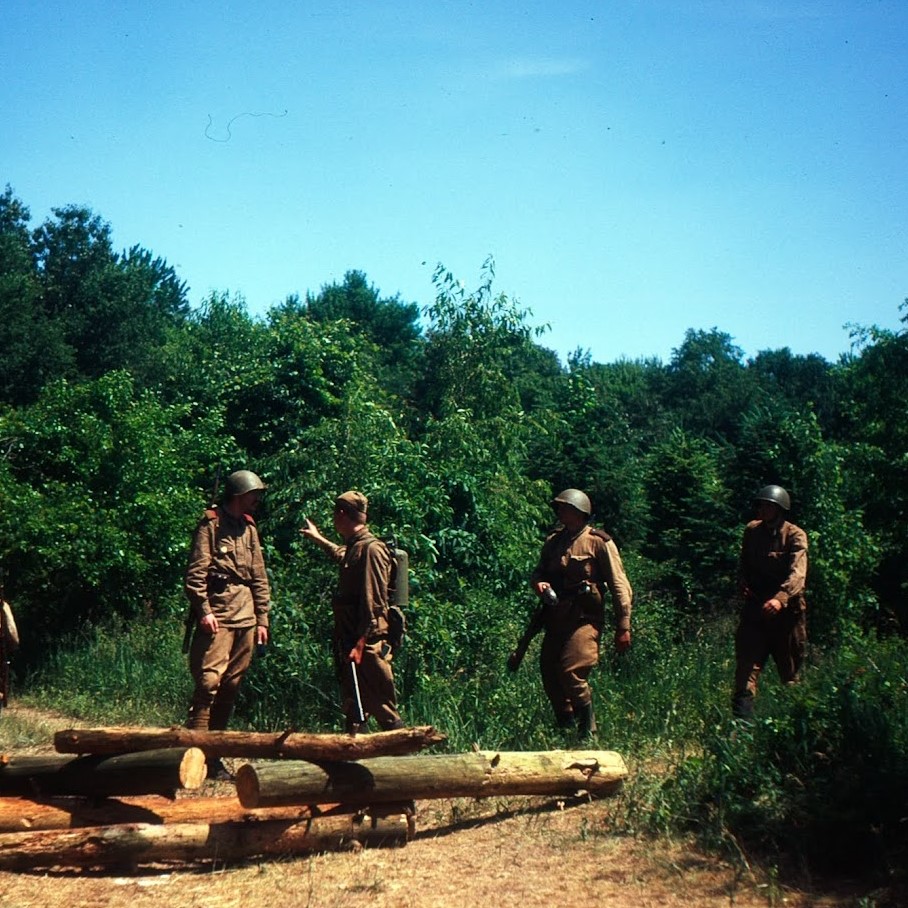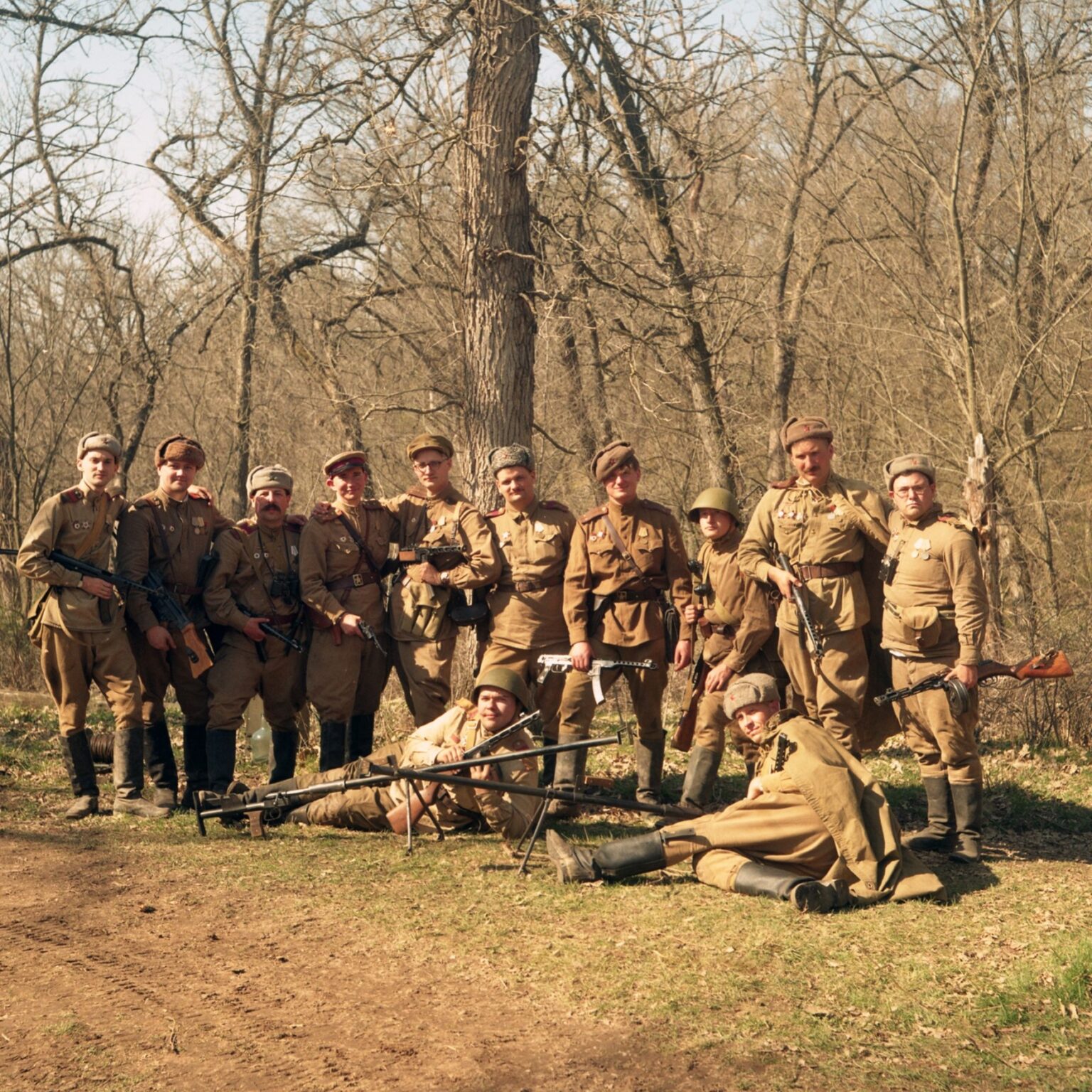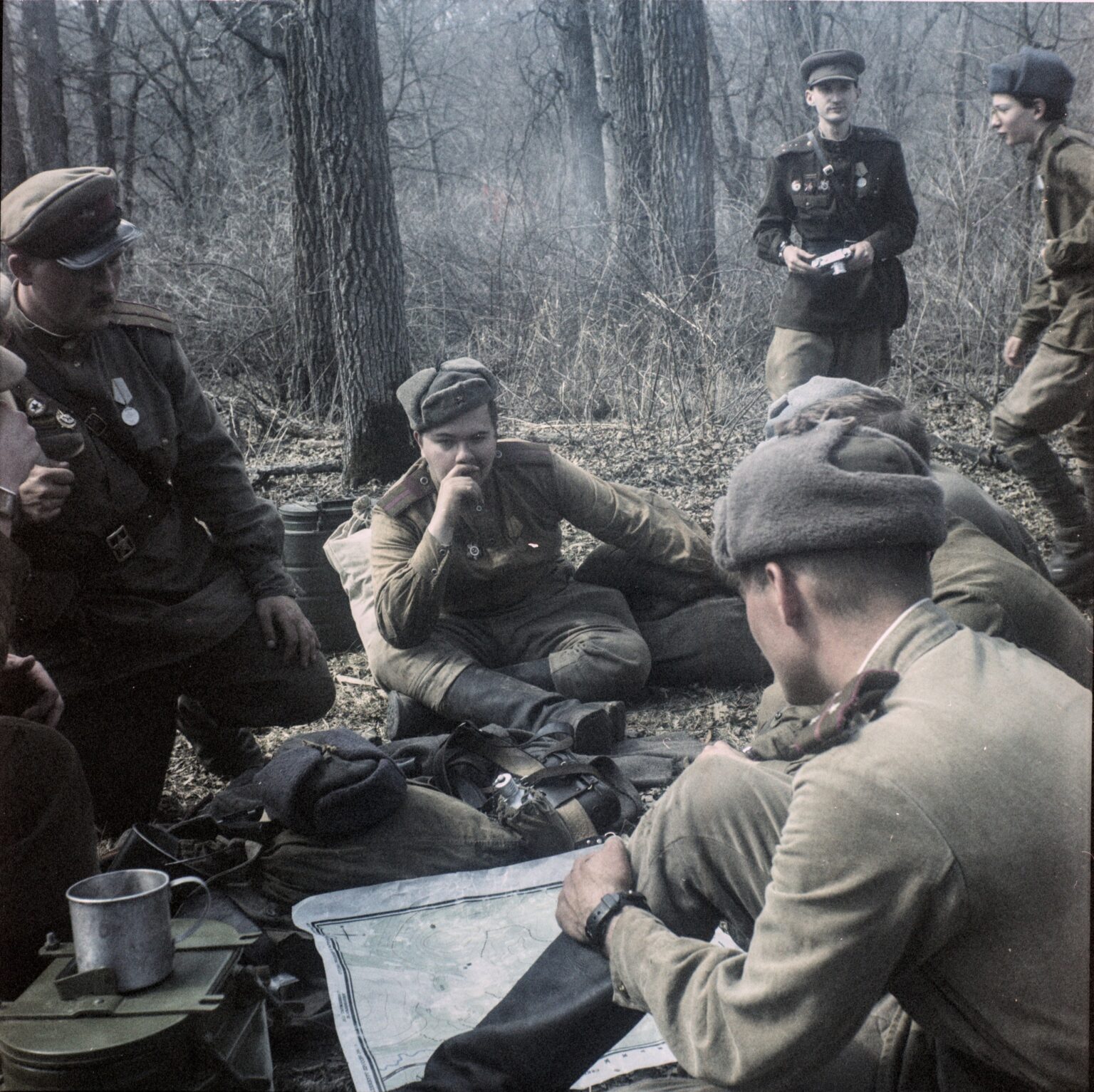Event Photos
This page serves as a testament to the events Istochnik has hosted and to the work and dedication of our photographers. We aim to encapsulate the essence of our experiences, allowing you to relive the excitement and memories that our events foster. These photos not only portray the events themselves but also the strong bonds that make Istochnik a true reenacting community. A huge thank you to Elena Oreshkin, Vijay Kamaraj, Kevin Speiden, Pyotr Rodchenko, and Brandon Fisichella. – BootSpoon
Below are some of the photos from Istochnik’s 1941 immersion event, Operation Barbarossa, The Defense of Smolensk. Istochnik portrayed the 1st Battalion, 477th Rifle Regiment apart of the 161st Rifle Division stationed in Orsha, Belarussian S.S.R during the defense of Smolensk in July 1941.
On June 22nd 1941, German forces crossed the Soviet border and began their invasion of the Soviet Union. Operation Barbarossa was one of the largest military campaigns of all time, leading the Red Army to suffer disastrous defeats nearing losses of almost 5 million soldiers by the end of 1941. They also lost a significant portion of the Western Soviet Union, and had German soldiers bearing down on Moscow and Leningrad. The Western front in particular saw massive losses. They suffered multiple massive encirclements.
The 161st Rifle Division was a reserve unit formed in Mogilev in 1940. In May, 1941 the division had been brought up to a strength of about 12,000 men, a high proportion of younger and well-motivated men composed the unit. In addition a high proportion of senior leaders had combat experience from the Winter War. They were mobilized just before Barbarossa, and were moving towards Minsk when the war started. They were unable to move towards the city. They were assigned to the 2nd Rifle Corps of the Western Front and formed a new line of defense with other reserve units protecting Smolensk in early July 1941. Around July 14th they were engaged by the German XXXXVI Corps, and forced to retreat to Smolensk. There the division distinguished itself, and was awarded the title of “Guards” on September 18th, 1941.
Here are some of the photos from Istochnik’s 1941 immersion event, Operation Barbarossa, The Defense of Smolensk. Istochnik portrayed the 1st Battalion, 477th Rifle Regiment apart of the 161st Rifle Division stationed in Orsha, Belarussian S.S.R during the defense of Smolensk in July 1941.
Below are some of the photos from Istochnik’s 1941 immersion event, Operation Barbarossa, The Defense of Smolensk. Istochnik portrayed the 1st Battalion, 477th Rifle Regiment apart of the 161st Rifle Division stationed in Orsha, Belarussian S.S.R during the defense of Smolensk in July 1941.
On June 22nd 1941, German forces crossed the Soviet border and began their invasion of the Soviet Union. Operation Barbarossa was one of the largest military campaigns of all time, leading the Red Army to suffer disastrous defeats nearing losses of almost 5 million soldiers by the end of 1941. They also lost a significant portion of the Western Soviet Union, and had German soldiers bearing down on Moscow and Leningrad. The Western front in particular saw massive losses. They suffered multiple massive encirclements.
The 161st Rifle Division was a reserve unit formed in Mogilev in 1940. In May, 1941 the division had been brought up to a strength of about 12,000 men with the addition of workers and collective farmers, including 396 Communist Party members and candidates and 2,170 Komsomols, indicating a high proportion of younger and well-motivated men. In addition a high proportion of senior leaders had combat experience from the Winter War. They were mobilized just before Barbarossa, and were moving towards Minsk when the war started. They were unable to move towards the city. They were assigned to the 2nd Rifle Corps of the Western Front and formed a new line of defense with other reserve units protecting Smolensk in early July 1941. Around July 14th they were engaged by the German XXXXVI Corps, and forced to retreat to Smolensk. There the division distinguished itself, and was awarded the title of “Guards” on September 18th, 1941.
Below are some of the photos from Istochnik’s 1942 immersion event, The Rzhev Meatgrinder. Istochnik portrayed the 2nd Battalion, 1255th Guards Rifle Regiment apart of the 379th Rifle Division. A veteran unit of the 1941 winter Moscow counter offensive, it would be transferred to the Rzhev front in 1942 to take part in the next big Soviet offensive.
After the winter counter offensive one position held, though. A bulge of territory 230km from Moscow was clung to by forces from Army Group Center, who desired it as a base to eventually attack Moscow again. Centered on the city of Rzhev, this salient would be the site of some of the bloodiest fighting of the war, with historians estimating millions of casualties resting in this small area.
The Red Army in 1942 was clinging onto life, doing everything they can to attempt to push the German forces back after the losses of 1941. Defeat meant annihilation at the hands of the Germans apart of their holocaust across Europe. These early days of 1942 were the darkest days for the Red Army, but hope was beginning to find its place, and spread through the Red Army after victory at Stalingrad proved inevitable heading into 1943.
Here are some of the photos from Istochnik’s 1942 immersion event, The Rzhev Meatgrinder. Istochnik portrayed the 2nd Battalion, 1255th Guards Rifle Regiment apart of the 379th Rifle Division. A veteran unit of the 1941 winter Moscow counter offensive, it would be transferred to the Rzhev front in 1942 to take part in the next big Soviet offensive.
Below are some of the photos from Istochnik’s 1942 immersion event, The Rzhev Meatgrinder. Istochnik portrayed the 2nd Battalion, 1255th Guards Rifle Regiment apart of the 379th Rifle Division. A veteran unit of the 1941 winter Moscow counter offensive, it would be transferred to the Rzhev front in 1942 to take part in the next big Soviet offensive.
After the winter counter offensive one position held, though. A bulge of territory 230km from Moscow was clung to by forces from Army Group Center, who desired it as a base to eventually attack Moscow again. Centered on the city of Rzhev, this salient would be the site of some of the bloodiest fighting of the war, with historians estimating millions of casualties resting in this small area.
The Red Army in 1942 was clinging onto life, doing everything they can to attempt to push the German forces back after the losses of 1941. Defeat meant annihilation at the hands of the Germans apart of their holocaust across Europe. These early days of 1942 were the darkest days for the Red Army, but hope was beginning to find its place, and spread through the Red Army after the victory at Stalingrad proved inevitable heading into 1943.
Below are some of the photos from the Stalingrad Factory event. Istochnik portrayed the 1st Battalion, 650th Rifle Regiment apart of the 138th Rifle Division. They defended the “П” house (main administrative building) of the Barricades Ordnance Factory on November 10-12, 1942.
The 138th Rifle Division was originally formed in September 1939. By December they were already engaged in Finland on the Karelian Isthmus. When war broke out, they were shifted into the Crimean Front. They were nearly destroyed near Kerch in May 1942. Upon refitting, they were engaged heavily in Operation Blue. On the night of October 16th-17th, they were ferried across the Volga into the Barrikady Ordnance Factory in Stalingrad. Building by Building, the Germans pushed them out of the Barrikady Factory until, by November 10th, 1942, only a foothold remained. During the Actions of November 11th-13th, the elements of the 650th Rifle Regiment in the Apothecary and the “П” house were eliminated with very few escaping survivors. The Germans drove a wedge in the Soviet Defences, reached the Volga on a narrow salient, and put direct small arms fire on the 138th Division Headquarters. Of the ~80 defenders of the “П” House, only 6 survived November 13th, 1942. Of those 6, only 2 were able to continue fighting.
This was the furthest the German army reached into the territory of the USSR during WWII. For the Red Army, and the people of the Soviet Union, defeat at Stalingrad meant total annihilation at the hands of the Nazis. “There is no land beyond the Volga.”
Here are some of the photos from the Stalingrad Factory event. Istochnik portrayed the 1st Battalion, 650th Rifle Regiment apart of the 138th Rifle Division. They defended the “П” house (main administrative building) of the Barricades Ordnance Factory on November 10-12, 1942.
Below are some of the photos from the Stalingrad Factory event. Istochnik portrayed the 1st Battalion, 650th Rifle Regiment apart of the 138th Rifle Division. They defended the “П” house (main administrative building) of the Barricades Ordnance Factory on November 10-12, 1942.
The 138th Rifle Division was originally formed in September 1939. By December they were already engaged in Finland on the Karelian Isthmus. When war broke out, they were shifted into the Crimean Front. They were nearly destroyed near Kerch in May 1942. Upon refitting, they were engaged heavily in Operation Blue. On the night of October 16th-17th, they were ferried across the Volga into the Barrikady Ordnance Factory in Stalingrad. Building by Building, the Germans pushed them out of the Barrikady Factory until, by November 10th, 1942, only a foothold remained. During the Actions of November 11th-13th, the elements of the 650th Rifle Regiment in the Apothecary and the “П” house were eliminated with very few escaping survivors. The Germans drove a wedge in the Soviet Defences, reached the Volga on a narrow salient, and put direct small arms fire on the 138th Division Headquarters. Of the ~80 defenders of the “П” House, only 6 survived November 13th, 1942. Of those 6, only 2 were able to continue fighting.
This was the furthest the German army reached into the territory of the USSR during WWII. For the Red Army, and the people of the Soviet Union, defeat at Stalingrad meant total annihilation at the hands of the Nazis. “There is no land beyond the Volga.”
Below are some of the photos from Istochnik’s Kursk immersion event, The Defense of Obayan. Istochnik portrayed the 2nd Battalion, 34th Guards Rifle Regiment apart of the 13th Guards Rifle Division. A veteran unit of Stalingrad determined to hold their ground and prevent the Germans any further advance into the Soviet Union.
The Red Army in 1943 was an army in flux. Fresh off the successes of late 1942, Red Army commanders and men began to regain their confidence, and now knew the Germans could be beat, and beat on a large scale. Emboldened, a series of attacks in the spring of 1943 saw limited success, with gains the biggest in the south. This created a large salient, or bulge in the frontlines, centered around the city of Kursk. The Soviets knew a large German attack was due in the summer, and correctly surmised that the bulge was a tempting target.
Accordingly, they committed huge forces to defend the bulge in depth, building thousands of kilometers of defensive lines into the summer. With visions of success and large prisoner hauls to fuel their slave-labor empire, the Germans decided to spend their energy for the 1943 season attacking this nest, with fateful consequences for the outcome of the war…
Here are some of the photos from Istochnik’s Kursk immersion event, The Defense of Obayan. Istochnik portrayed the 2nd Battalion, 34th Guards Rifle Regiment apart of the 13th Guards Rifle Division. A veteran unit of Stalingrad determined to hold their ground and prevent the Germans any further advance into the Soviet Union.
Below are some of the photos from Istochnik’s Kursk immersion event, The Defense of Obayan. Istochnik portrayed the 2nd Battalion, 34th Guards Rifle Regiment apart of the 13th Guards Rifle Division. A veteran unit of Stalingrad determined to hold their ground and prevent the Germans any further advance into the Soviet Union.
The Red Army in 1943 was an army in flux. Fresh off the successes of late 1942, Red Army commanders and men began to regain their confidence, and now knew the Germans could be beat, and beat on a large scale. Emboldened, a series of attacks in the spring of 1943 saw limited success, with gains the biggest in the south. This created a large salient, or bulge in the frontlines, centered around the city of Kursk. The Soviets knew a large German attack was due in the summer, and correctly surmised that the bulge was a tempting target.
Accordingly, they committed huge forces to defend the bulge in depth, building thousands of kilometers of defensive lines into the summer. With visions of success and large prisoner hauls to fuel their slave-labor empire, the Germans decided to spend their energy for the 1943 season attacking this nest, with fateful consequences for the outcome of the war…
Below are some of the photos from Istochnik’s 1944 immersion event, Romanian Spring, the battle for Targu Frumos. Istochnik portrayed the 2nd Battalion of the 281st Guards Rifle Regiment. Determined to bring the war to a swift conclusion, they were apart of the spearhead invasion of Romania in April of 1944. They were fresh off of their success in defeating German forces in Ukraine apart of Ivan Konev’s 2nd Ukrainian Front.
At this point the war was heavily in the Allies favor, this is no longer the early years of the war, the Red Army now firmly controls the initiative. The Soviets are advancing on all fronts after the German defeat at Kursk the year prior. Hundreds of thousands of square kilometers have been regained by the Red Army all while the western Allies are on the eve of the invasion of France and the liberation of Western Europe.
Will the German army continue to hold out with its armies now primarily on the defensive? For now the Red Army pushes forward hoping to find a defeated, weak enemy in Romania, but this is not what they meet at the village of Târgu-Frumos. However, later that summer the German army will suffer its greatest defeats up to that point by the Allies. The Soviet summer offensives and invasion of France ultimately decimate the German army, staging the war to come to a conclusion in the first half of 1945…
Below are some of the photos from Istochnik’s 1944 immersion event, Romanian Spring, the battle for Targu Frumos. Istochnik portrayed the 2nd Battalion of the 281st Guards Rifle Regiment. Determined to bring the war to a swift conclusion, they were apart of the spearhead invasion of Romania in April of 1944. They were fresh off of their success in defeating German forces in Ukraine apart of Ivan Konev’s 2nd Ukrainian Front.
Below are some of the photos from Istochnik’s 1944 immersion event, Romanian Spring, the battle for Targu Frumos. Istochnik portrayed the 2nd Battalion of the 281st Guards Rifle Regiment. Determined to bring the war to a swift conclusion they were apart of the spearhead invasion of Romania in April of 1944. They were fresh off of their success in defeating German forces in Ukraine apart of Ivan Konev’s 2nd Ukrainian Front.
At this point the war was heavily in the Allies favor, this is no longer the early years of the war, the Red Army now firmly controls the initiative. The Soviets are advancing on all fronts after the German defeat at Kursk the year prior. Hundreds of thousands of square kilometers have been regained by the Red Army all while the western Allies are on the eve of the invasion of France and the liberation of Western Europe.
Will the German army continue to hold out with its armies now primarily on the defensive? For now the Red Army pushes forward hoping to find a defeated, weak enemy in Romania, but this is not what they meet at the village of Târgu-Frumos. However, later that summer the German army will suffer its greatest defeats up to that point by the Allies. The Soviet summer offensives and invasion of France ultimately decimate the German army, staging the war to come to a conclusion in the first half of 1945…
Below are some of the photos from Istochnik’s 1945 immersion event, The Gates of Berlin, The Battle of Seelow Heights. We portrayed the 1st Battalion of the 270th Guards Rifle Regiment of the 89th Guards Divison. Hardened by years of relentless fighting and driven by the promise of final victory, these men now stood at the threshold of Berlin itself. After a year of decisive Soviet victories across Eastern Europe, including the destruction of Army Group Center and the crossing of the Vistula, the Red Army stood poised along the Oder River. Ahead of them lay the Seelow Heights—a natural defensive position and the last major obstacle before the German capital.
By this stage, the balance of power had fully shifted. The Red Army had become a highly coordinated and mechanized force, wielding artillery, armor, logistical, air, and organizational superiority including unmatched momentum. With the Western Allies advancing deeper into Germany and Berlin nearly encircled, the German command faced the grim reality that the war was drawing to a catastrophic end. These are the final weeks of the war.
The Germans fought with the tenacity of a cornered enemy, exacting casualties in the fields, forests, and trenches of the Heights. Yet the outcome of a Soviet victory was inevitable. Within weeks, the gates to Berlin would fall, the war would end, and Europe would begin to rebuild. However, the seeds of future conflict were already in place getting ready to immerge the upcoming Cold War.
Below are some of the photos from Istochnik’s 1945 immersion event, The Gates of Berlin, The Battle of Seelow Heights. We portrayed the 1st Battalion of the 270th Guards Rifle Regiment of the 89th Guards Divison. Hardened by years of relentless fighting and driven by the promise of final victory, these men now stood at the threshold of Berlin itself. Ahead of them lay the Seelow Heights—a natural defensive position and the last major obstacle before the German capital.
Below are some of the photos from Istochnik’s 1945 immersion event, The Gates of Berlin, The Battle of Seelow Heights. We portrayed the 1st Battalion of the 270th Guards Rifle Regiment of the 89th Guards Divison. Hardened by years of relentless fighting and driven by the promise of final victory, these men now stood at the threshold of Berlin itself. After a year of decisive Soviet victories across Eastern Europe, including the destruction of Army Group Center and the crossing of the Vistula, the Red Army stood poised along the Oder River. Ahead of them lay the Seelow Heights—a natural defensive position and the last major obstacle before the German capital.
By this stage, the balance of power had fully shifted. The Red Army had become a highly coordinated and mechanized force, wielding artillery, armor, logistical, air, and organizational superiority including unmatched momentum. With the Western Allies advancing deeper into Germany and Berlin nearly encircled, the German command faced the grim reality that the war was drawing to a catastrophic end. These are the final weeks of the war.
The Germans fought with the tenacity of a cornered enemy, exacting casualties in the fields, forests, and trenches of the Heights. Yet the outcome of a Soviet victory was inevitable. Within weeks, the gates to Berlin would fall, the war would end, and Europe would begin to rebuild. However, the seeds of future conflict were already in place getting ready to immerge the upcoming Cold War.


